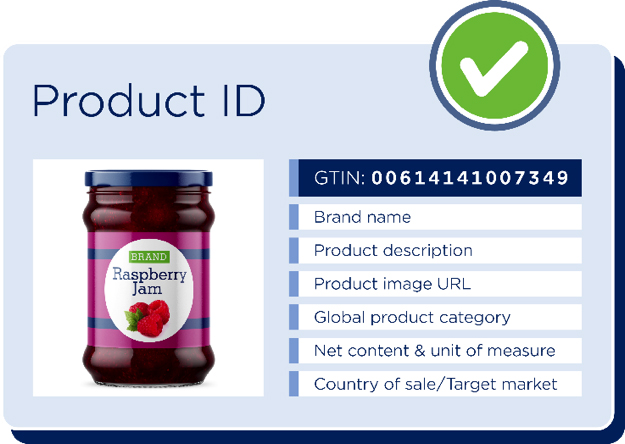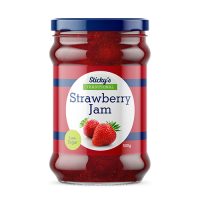Several leading consumer packaged goods (CPG) brands and retailers started collaborating last year to address an issue growing larger by the day—inaccurate product data in the supply chain. They have challenged themselves to better serve customers who are shopping for their groceries more and more with smartphone in hand or shopping online. These companies worked together with the common understanding that standardization is imperative to have a consistent view of product data across the supply chain.

The group led by GS1 and the Consumer Goods Forum focused on the root causes of bad data in the retail grocery industry. Verified by GS1— a new, global cloud-based registry that will help trading partners confirm the unique identity of products—resulted from these discussions. It will serve as a single source for retailers, marketplaces and the solution providers they work with to automatically check core product attributes to help ensure the integrity of product listings.
For these recipients to access trusted data through this registry platform, brands must first provide seven core attributes for an “identification card” for products, similar to the identification card you carry around in your wallet. Much like eye color, hair color and height, products have attributes used by retailers to confirm the product is what a brand says it is. Each one provides a layer of trust to help increase efficiency and accuracy in the supply chain.
Let’s break down the importance of these attributes and learn why they are essential to confirm a product’s unique identity.
The Identification Number
Global Trade Item Number (GTIN) is used to uniquely identify a trade item in the global supply chain. This number is encoded into the U.P.C. barcode used at the point of sale or can be included in online product listings.
The GTIN plays a critical role in a product’s identity due to the way it is constructed. The brand owner selling the product is identified in the number itself in the form of a company prefix, the first few numbers of the GTIN. But over the years, erroneous numbers have plagued the CPG industry. A prefix that has four zeros, for example, is an indicator that the GTIN is not unique and might have been the result of human error. Also, some brand owners have found that GTINs were “borrowed” from other products during the setup process, resulting in duplicate GTINs in the supply chain, often tied to very different products. The GTIN is the key piece of information for a retailer to know they are working with a reputable company and can confidently add a product to their offering.
The Essential Descriptors
Brand name is another important part of a product’s identity, especially in relation to its GTIN. Verified by GS1 will provide a way for brands and retailers to make sure the right brand name is used in connection with the right GTIN. GS1 worked with member companies to set forth a common definition for brand name to increase consistency in the supply chain. It is a name provided by the brand owner that is intended to be recognized by the consumer as represented on the product.
Let’s say your company makes jam. The brand name would be Sticky’s Traditional, because that is what’s recognizable by the consumer. Some contributors to Verified by GS1 were surprised to find extreme inconsistencies with brand names in their backend systems, which caused confusion for consumers who searched online for familiar keywords and came up with nothing.
Product description is defined as a description of a product using a combination of key elements familiar to consumers, such as flavor or scent. The description should be unique so that consumers can properly distinguish it from other products. In our jam example, the product description is just what it sounds like it would be: Sticky’s Traditional Raspberry Jam, Low Sugar, 18 oz.

Much like your driver’s license describes what you look like through eye color, hair color, or whether or not you wear glasses, the product description is what the consumer can visually confirm when they look at the package. Another key attribute in the Verified by GS1 identification card, the product image URL, serves the same purpose. A standardized product image clearly depicts the product being sold, and the industry can now align on a common naming convention for the image as well as how to communicate the image to trading partners.
The Necessary Technical Components
The three remaining parts of the product’s ID card are the components of identification most important for machines to read and understand and are less sought-after by consumers. Global product category, for example, is a classification code developed in accordance with GS1 Standards that provides buyers and sellers a common language for grouping products in the same way. It could be used as classifying option for consumers shopping online. In our jam example, the global product category is “10000581 – Food Glazes (Shelf Stable).”
Net content and unit of measure are essential to commonly represent a product’s weights and dimensions. This attribute makes it clear that metrics and units of measure go hand-in-hand—our jar of jam cannot just say NET 18. It needs to say it weighs NET 18 OZ. Either of these attributes independent of each other are red flags that the data is erroneous.
Country of sale or target market are used interchangeably and both indicate the location where the product is being sold. For multinational companies selling products in more than one country, this becomes important to ensure the right language is on the right product packaging to match the target market where it is being sold. For example, one product that has French on its packaging should signify France as its country of sale/target market, while an identical product with German on its packaging should be coded for Germany.
All seven attributes are pieces of information deemed important to consumer satisfaction and serve as a jumping off point for the transparency initiatives being demanded by consumers. While it is only just ramping up in the retail grocery industry now, Verified by GS1 is designed to help several different types of industries confirm product identity. It has the potential to significantly improve the foundational data that will only grow in importance as more consumers shop digitally.
Ultimately, as more data is shared consistently according to standards, incremental progress will be made toward the ultimate goal of cementing the trust of consumers, no matter where and how they encounter information about the products they purchase.



